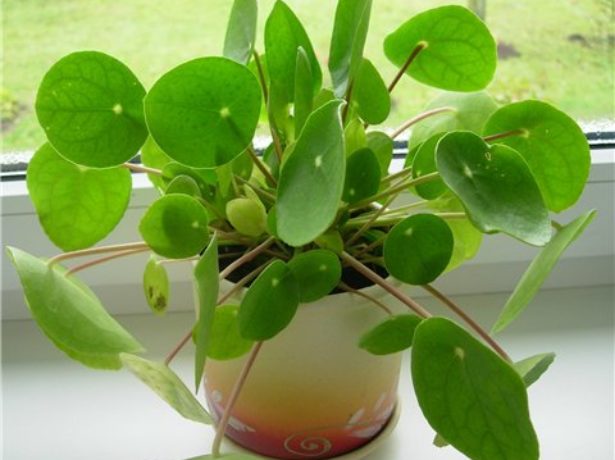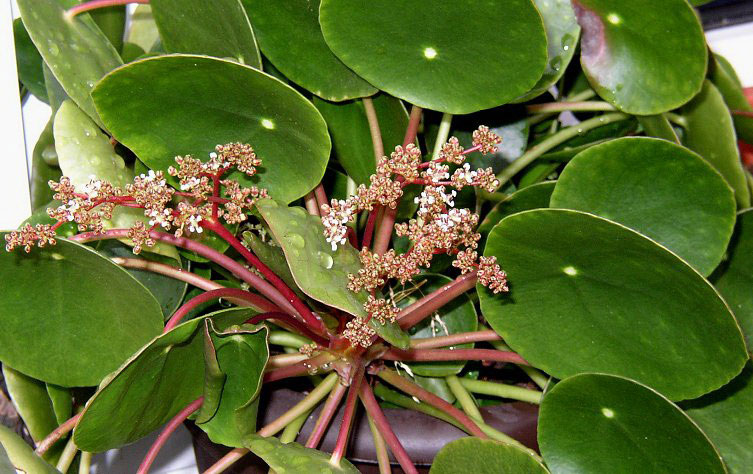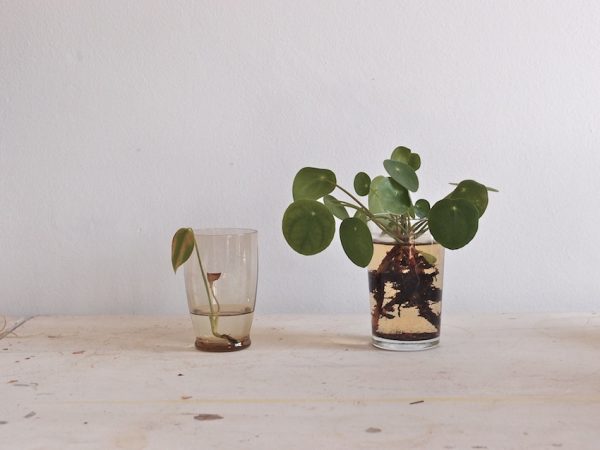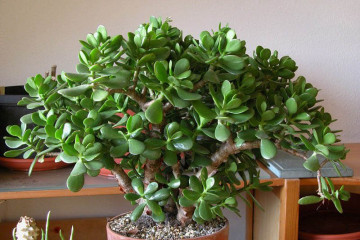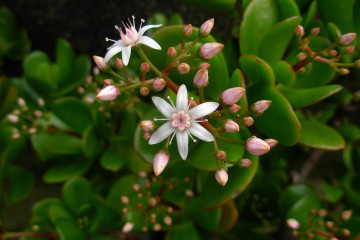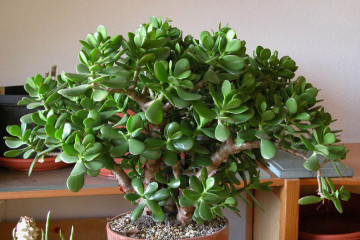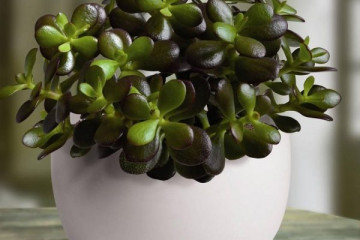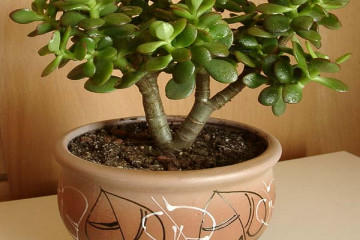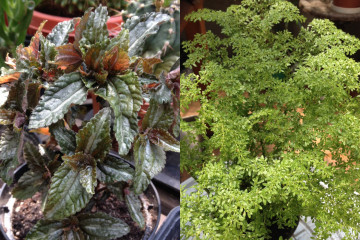Peperomium pylaea or Chinese money tree
Content:
Pylaea has a huge number of species, between which it is difficult to find similarities. Of particular interest to flower growers is the peperomial pilea (Pilea Peperomioides), which has not only an attractive appearance, but also the ability to attract money into the house.
Description of the plant
Pilea peperomioides (Pilea Peperomioides) is one of 400 species of the genus of perennial and annual plants of the Nettle family.
The pylaea reaches a height of 40-60 cm. It has a central stem, from which long petioles with round leaves at the ends diverge in different directions. The color of the leaves is bright green, the surface is glossy. Pilea grows in the form of a bush, the crown is spherical. If you follow the rules of care, then you can wait for the flowering of small pale red flowers.
The flower got its name "pilea" because of its ability to spray pollen over long distances. In indoor conditions, this rarely happens, but those who have caught such a phenomenon compare it with fireworks.
Chinese money tree
If earlier only the bastard and zamiokulkas were called money trees, then with the arrival of the pilea in Europe, the number was replenished. The second popular name for the plant is the Chinese money tree, or the Japanese dollar.
Homeland and territory of distribution
In the wild, the peperomiaceae grows in India and parts of China. It can be found in mountains or other places with fertile soils or light peaty soil.
The plant appeared in Europe not so long ago, in 1946. It was brought there by travelers from Sweden. They did not cultivate it in the wild, but immediately began to breed it as a houseplant.
Beneficial features
Florists who have a saw on the windowsill know that this plant relieves fatigue, eliminates bad thoughts, and has a positive effect on the overall emotional state. The plant not only cleans the room from dust, but also serves as a filter of negative energy.
One of the main factors why people start a saw is their magical ability to attract money into the house.
Home care
Peperomium pilea is an unpretentious plant that looks great in niches, in wall pots, there is an option of growing a flower as a soil flower.
Post-purchase actions
Immediately after purchase, the plant is transplanted into a wide, shallow container. A universal land purchased in a store or special for decorative deciduous plants is suitable. You can independently prepare a substrate from leaf turf, peat, sand and humus.
Temperature and lighting
Despite the fact that the pilea was brought from the mountains, the bright sun is contraindicated for her. It is best to place the plant pot in a well-lit place, but out of direct sunlight.
The plant is thermophilic, so it can be kept at room temperature. Drafts are fatal for the saw. In summer, it is recommended to take the flower out into the fresh air (on the balcony or outside).
Soil and transplant
The first transplant is carried out immediately after the purchase of the plant, each subsequent transplant every year in the spring and summer.
Step-by-step instructions for transplanting a sawtooth:
- Water the flower abundantly the day before transplanting.
- Rinse the roots in water immediately before transplanting.
- Remove tangled and damaged roots.
- Treat the roots with a root preparation or similar.
- Place 3 cm of drainage layer on the bottom of the pot.
- Place fresh soil in a pot.
- Transplant a flower without deepening it.
- Add lack of soil without tamping.
After transplanting, the plant needs rest, you need to take care of it carefully. It will be possible to loosen the soil in about a week, and apply the first fertilization only after 2 months.
Watering peperomia and caring for leaves
Pilea likes moist soil, but dislikes humid air. The flower reacts sharply to spraying - it sheds its leaves, although it is grateful to the moist air.
In the warm season, the frequency of watering depends on the weather; it is required to moisten the soil as the top layer dries. In the colder season, the sawtooth is watered a few days after the soil dries up.
To increase the humidity, it is recommended to put expanded clay in the pan of the pot and pour some water. During the heating season, it will be beneficial for all indoor plants to use a humidifier.
Features of peperomia care in indoor floriculture
The Chinese sawmill money tree does not require much attention. In winter, the plant does not go into a dormant state, so it can reproduce all year round. To arrange a rest for him, in the period from October to February, the air temperature in the room must be lowered to 18 ° C, the humidity and the frequency of watering must be reduced.
Fertilization and feeding
Fertilizer is applied in the spring-summer period once every 10 days, in the autumn-winter period once a month. Universal organic and mineral fertilizers are used.
As a top dressing from natural products, humus, ash, yeast, onions, aquarium water, coffee grounds, sugar, and banana peels are suitable.
Reproduction
Saw can be propagated throughout the year. The method of grafting and sowing of seeds is used.
It is possible to propagate vegetatively with cuttings up to 10 cm long. They are placed in a vessel with boiled water, and after the roots appear, they are planted in the ground. If desired, you can germinate cuttings immediately in a mixture of peat and sand. Then the container is covered with a plastic bag to create a greenhouse effect.
The seed method is more labor intensive. The seeds are laid out in a flat dish filled with peat and turf soil. From above, the vessel is covered with glass or foil and periodically ventilated. The sprout is transferred to a separate pot when 3-4 leaves appear.
After reading the article, surely many will be interested in this flower. It attracts attention by bringing good luck and money to the house, as well as being undemanding in care, which is so beneficial to many flower growers.
